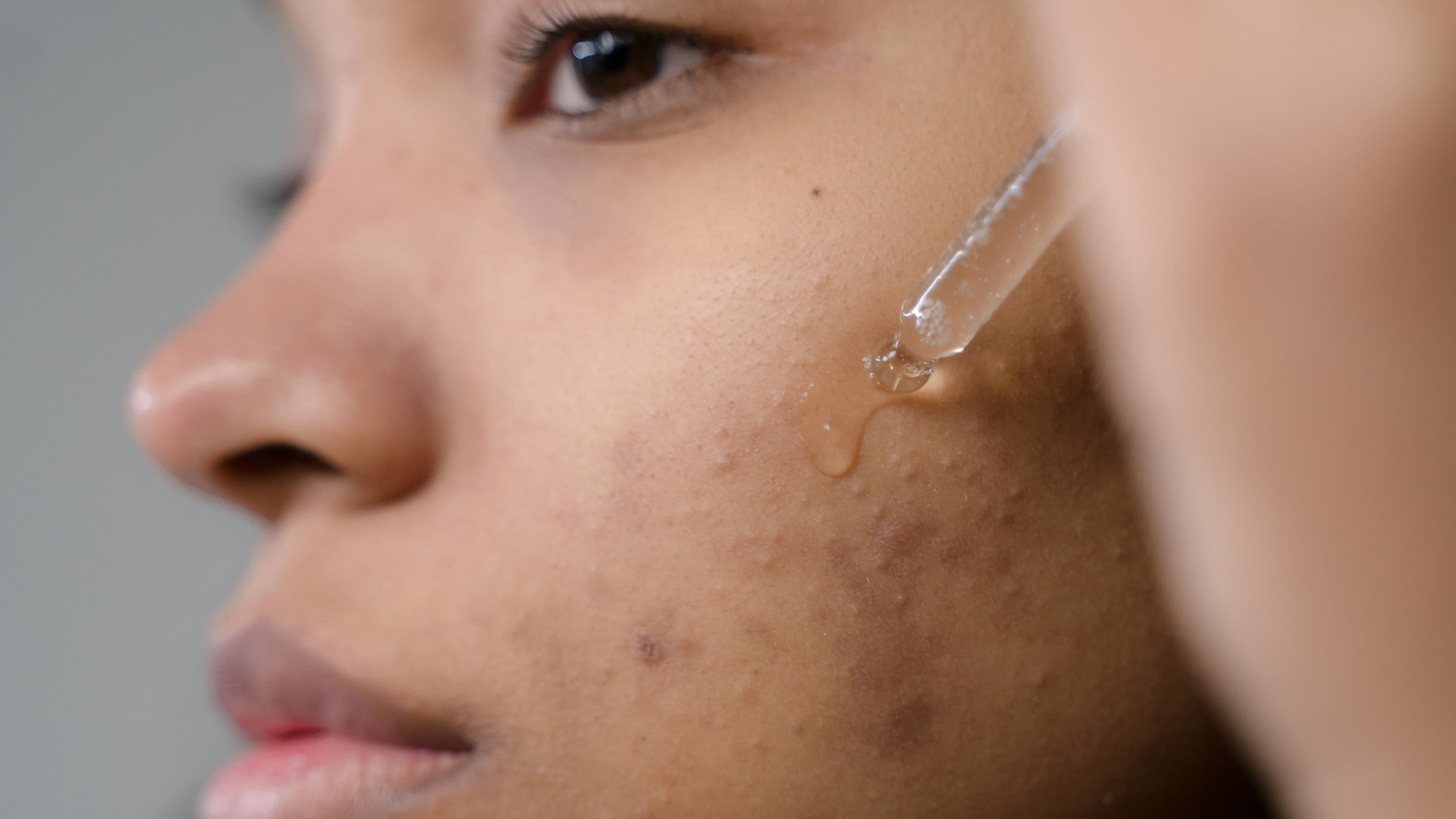
Folliculitis: Understanding and Managing
Folliculitis, a seemingly innocuous term, holds the potential to disrupt our skin's harmony. This common skin condition, affecting the hair follicles, often leads to discomfort and, if left untreated, may result in more severe complications. We'll delve into the intricacies of folliculitis, exploring its various facets, from causes and symptoms to treatment and prevention.
What is Folliculitis?
Folliculitis is a common skin condition that occurs when hair follicles become inflamed. Hair follicles are small, tube-like structures in the skin from which hair grows. When these follicles become infected or irritated, it leads to the development of folliculitis. This condition can affect any part of the body where hair grows, including the scalp, face, chest, back, buttocks, and legs.
The inflammation in folliculitis can result from bacterial, viral, or fungal infections, as well as physical irritation to the hair follicles. The most common cause is the bacteria Staphylococcus aureus. Folliculitis can manifest in various forms, from mild, superficial red bumps to deep, painful, pus-filled boils.
How Do I Know If It's Acne or Folliculitis?
Distinguishing between acne and folliculitis can be challenging because they share some common features. Both conditions involve inflammation around hair follicles, leading to the development of papules, pustules, and sometimes nodules. However, there are key differences in their causes, appearance, and associated symptoms that can help in identifying which condition is present.
- Cause: Acne is primarily caused by the overproduction of sebum (oil) by the sebaceous glands, leading to the blockage of hair follicles.
- Lesions: Acne lesions typically include whiteheads, blackheads, papules, pustules, nodules, and cysts.
- Distribution: Acne commonly appears on the face, chest, and back, where sebaceous glands are more abundant.
- Age of Onset: Acne often starts during puberty due to hormonal changes.
2. Folliculitis:
- Cause: Folliculitis is caused by the inflammation or infection of hair follicles, often due to bacteria (especially Staphylococcus aureus), fungi, or viruses.
- Lesions: Folliculitis presents as red bumps, pustules, or boils at the base of hair follicles. Pus-filled lesions are common.
- Distribution: Folliculitis can occur on any part of the body where hair grows, including the scalp, face, chest, back, buttocks, and legs.
- Associated Symptoms: Itching, tenderness, and a burning sensation are common with folliculitis.

Symptoms of Folliculitis
Recognizing the symptoms of folliculitis is crucial for early intervention. Here are common signs to watch out for:
- Red Bumps or Pustules: Folliculitis often presents as small red bumps or pustules at the base of hair follicles. These may be itchy or painful.
- Clusters of Lesions: The bumps or pustules can cluster together, forming larger patches of irritated skin.
- Pain or Tenderness: Folliculitis may cause discomfort or tenderness in the affected area. In some cases, the lesions can be painful to the touch.
- Itching or Burning Sensation: Many individuals with folliculitis experience itching or a burning sensation on the skin surrounding the affected hair follicles.
- Pus-filled Blisters: In more severe cases, folliculitis can lead to the formation of pus-filled blisters or boils. These may rupture, releasing pus and causing additional irritation.
- Hair Loss: If the condition is severe or recurring, it may lead to temporary hair loss in the affected area.
It's important to note that folliculitis can mimic other skin conditions, and certain types of folliculitis, such as hot tub folliculitis, may have unique symptoms related to their specific causes.
Types of Folliculitis
Folliculitis is not a one-size-fits-all condition; it comes in various forms, each with its distinct characteristics. Here are some common types of folliculitis:
1. Bacterial Folliculitis:
- Cause: Caused by bacterial infection, typically Staphylococcus aureus.
- Symptoms: Red bumps, pustules, or boils with pus at the hair follicle base.
- Affected Areas: This can occur anywhere on the body, especially in areas where hair is shaved or subjected to friction.
2. Hot Tub Folliculitis (Pseudomonas Folliculitis):
- Cause: Caused by the bacterium Pseudomonas aeruginosa, often found in contaminated hot tubs or pools.
- Symptoms: Small red bumps or rash, typically appearing within a few days of exposure to contaminated water.
- Affected Areas: Commonly affects areas covered by a swimsuit.
3. Fungal Folliculitis:
- Cause: Caused by a fungal infection, often by yeast or dermatophytes.
- Symptoms: Red, itchy pustules, sometimes with a surrounding ring-like appearance.
- Affected Areas: Commonly found in areas with warm and moist conditions, such as the groin or scalp.
4. Pityrosporum Folliculitis:
- Cause: Caused by the yeast Pityrosporum, often associated with an overgrowth of yeast on the skin.
- Symptoms: Itchy or acne-like rash, often seen on the chest, back, and upper arms.
- Affected Areas: Commonly affects areas with a higher concentration of sebaceous glands.
5. Barber's Itch (Pseudofolliculitis Barbae):
- Cause: Caused by ingrown hairs resulting from shaving.
- Symptoms: Inflamed, red bumps or pustules, often with a tendency to form keloids.
- Affected Areas: Commonly occurs in areas subjected to frequent shaving, such as the beard area.
6. Eosinophilic Folliculitis:
- Cause: Associated with an overreaction of the immune system.
- Symptoms: Red, itchy, and inflamed papules or pustules.
- Affected Areas: Often seen in people with compromised immune systems, such as those with HIV/AIDS.
Understanding these variations is essential for accurate diagnosis and effective treatment.
What Can Be Mistaken for Folliculitis?
Folliculitis shares symptoms with other skin conditions, leading to potential misdiagnoses. It's important to distinguish between these conditions for accurate diagnosis and appropriate treatment. Here are some conditions that may be confused with folliculitis:
- Acne: Both acne and folliculitis involve inflamed hair follicles, leading to the development of red bumps or pustules. Acne is primarily caused by the overproduction of sebum, while folliculitis is often due to infection or inflammation of hair follicles.
- Hives (Urticaria): Both conditions can present as red, itchy welts on the skin. Hives are typically caused by an allergic reaction and can appear and disappear rapidly, whereas folliculitis lesions persist longer.
- Contact Dermatitis: Both conditions may result in red, inflamed skin. Contact dermatitis is an allergic reaction to a substance that comes into contact with the skin, whereas folliculitis is related to hair follicle inflammation or infection.
- Keratosis Pilaris: Keratosis pilaris can cause small, red bumps on the skin. Unlike folliculitis, keratosis pilaris is often a benign condition caused by the buildup of keratin, and it's commonly found on the upper arms and thighs.
- Drug Eruptions: Some drug reactions can lead to skin rashes resembling folliculitis. These eruptions are often linked to medications and may occur shortly after starting a new drug.
- Molluscum Contagiosum: Molluscum contagiosum can present as small, raised bumps on the skin. It is a viral infection caused by the molluscum contagiosum virus and is not related to hair follicle inflammation.
Distinguishing between these conditions is crucial for implementing the appropriate treatment.
How to Get Rid of Folliculitis
Getting rid of folliculitis involves a combination of home care and lifestyle changes. The approach to treatment can vary depending on the type and severity of folliculitis. Here are some general guidelines on how to get rid of folliculitis:
- Maintain Good Hygiene: Keep the affected area clean by washing it gently with a mild soap. Avoid abrasive or harsh cleansers that may further irritate the skin.
- Warm Compresses: Apply warm compresses to the affected area to help soothe inflammation and encourage drainage of pus.
- Avoid Irritants: Refrain from activities that may further irritate the skin, such as excessive shaving or wearing tight clothing.
- Antifungal Medications: If the folliculitis is fungal, antifungal medications may be prescribed.
- Avoiding Hot Tubs or Pools: If the folliculitis is associated with hot tub use (hot tub folliculitis), avoiding contaminated water sources is crucial.
- Anti-Inflammatory Medications: Over-the-counter anti-inflammatory medications like ibuprofen can help manage pain and inflammation.
- Moisturize: Use a hypoallergenic moisturizer to keep the skin hydrated, especially if the folliculitis is causing dryness.
- Hair Removal Techniques: If shaving is a contributing factor, consider alternative hair removal methods like depilatory creams or electric razors.
Can Folliculitis Self Resolve?
One common question individuals often ask is whether folliculitis can resolve on its own. In many cases, mild cases of folliculitis can self-resolve with proper self-care and hygiene practices. Factors influencing this natural resolution include a person's overall health, immune system function, and the specific cause of folliculitis. Here are some factors that contribute to the self-resolution of folliculitis:
- Improved Hygiene: Keeping the affected area clean and practicing good hygiene can help prevent the spread of infection and promote healing.
- Avoiding Irritants: Refraining from activities that may irritate the skin, such as excessive shaving or wearing tight clothing, can contribute to the resolution of folliculitis.
- Warm Compresses: Applying warm compresses to the affected area can help soothe inflammation and encourage drainage of pus, facilitating the natural healing process.
- Time: Mild cases of folliculitis may improve over time as the body's immune system responds to the infection and the hair follicles heal.
However, it's important to note that not all cases of folliculitis will self-resolve, especially if the condition is more severe or if it is caused by a persistent bacterial, fungal, or viral infection. If symptoms persist, worsen, or if there are signs of a more serious infection, seeking medical attention is crucial.
How to Prevent Folliculitis
Prevention is often the best course of action when it comes to folliculitis. Adopting good hygiene practices, making lifestyle adjustments, and being mindful of factors that can contribute to hair follicle inflammation or infection. Furthermore, maintaining a healthy lifestyle, including a balanced diet and regular exercise, can contribute to overall skin health. Here are some tips to help prevent folliculitis:
- Maintain Good Hygiene: Wash regularly with a mild soap to keep the skin clean. Shower after activities that cause sweating, such as exercise.
- Avoid Tight Clothing: Wear loose-fitting clothing to reduce friction on the skin.
- Proper Shaving Techniques: If shaving, use a clean, sharp razor and shaving cream. Shave in the direction of hair growth to minimize irritation. Consider alternative hair removal methods if shaving contributes to folliculitis.
- Clean Hot Tubs and Pools: If using hot tubs or pools, ensure that they are properly maintained and chlorinated to reduce the risk of hot tub folliculitis.
- Avoid Sharing Personal Items: Avoid sharing razors, towels, or other personal items to minimize the risk of bacterial or fungal transmission.
- Moisturize: Keep the skin well-moisturized, especially in dry or cold conditions. Use hypoallergenic moisturizers to prevent dry skin.
- Exfoliate Gently: Gentle exfoliation can help prevent ingrown hairs, especially in areas prone to shaving.
- Regular Hair Washing: Wash the scalp regularly, especially if prone to folliculitis on the scalp.
- Avoid Picking or Scratching: Refrain from picking, scratching, or squeezing folliculitis lesions, as this can worsen the condition and lead to infection.
- Prompt Treatment of Skin Conditions: Treat other skin conditions promptly, as certain skin conditions may predispose individuals to folliculitis.
- Use Clean Bedding: Wash pillowcases, sheets, and blankets regularly to minimize the risk of bacterial or fungal contamination.
- Be Mindful of Potential Irritants: Be aware of potential irritants in skincare products, detergents, or fabric softeners, and choose products that are gentle on the skin.
By incorporating these preventive measures into your routine, you can reduce the risk of developing folliculitis.
In conclusion, understanding folliculitis is paramount for maintaining skin health. By recognizing its causes, symptoms, and various types, individuals can take proactive steps to address and prevent this common skin condition. Tackling folliculitis head-on ensures not only relief from discomfort but also the preservation of healthy, radiant skin.






